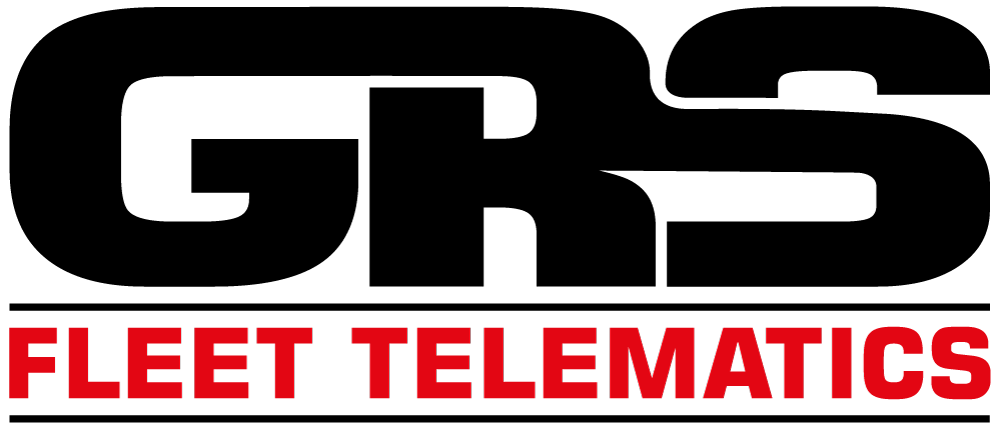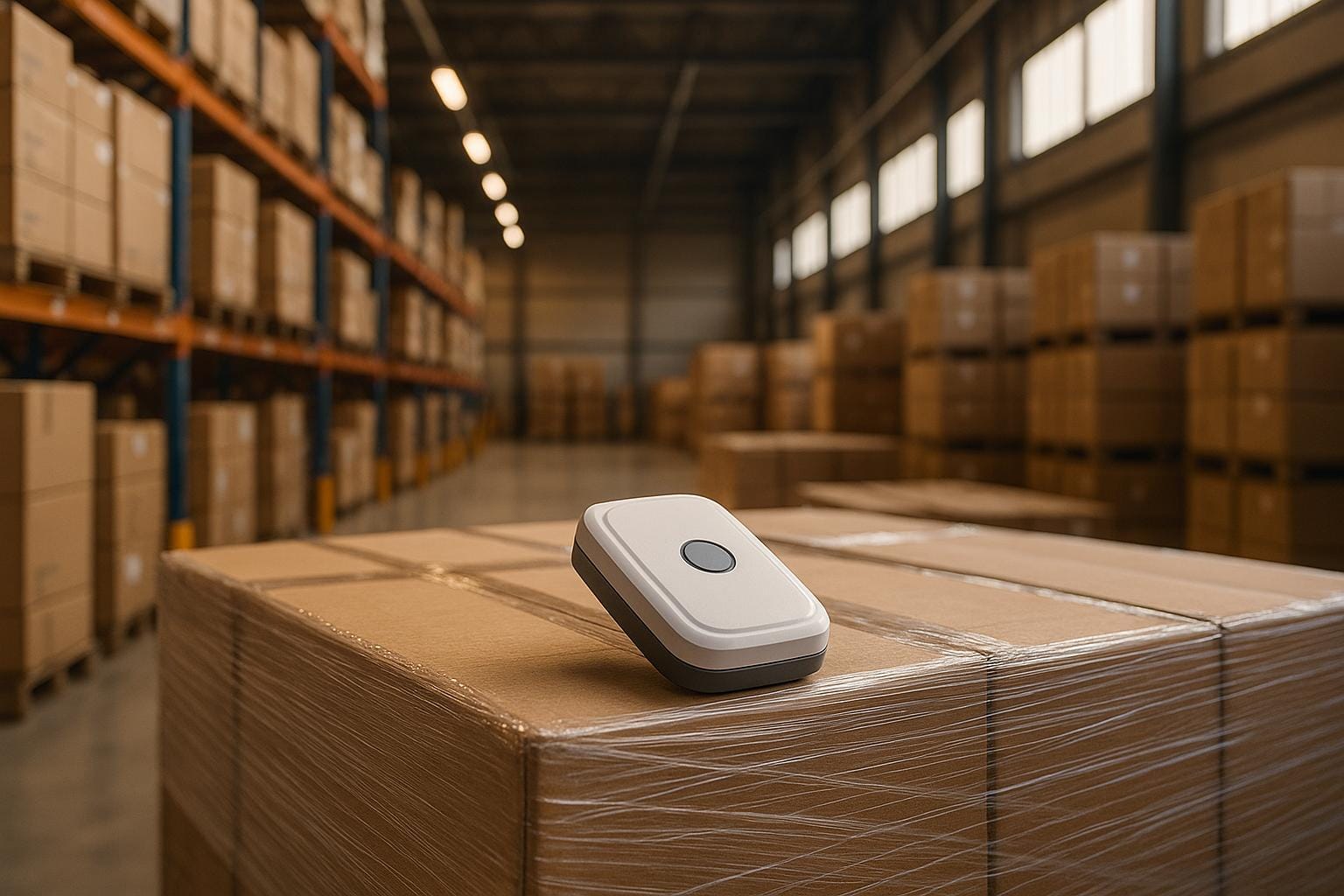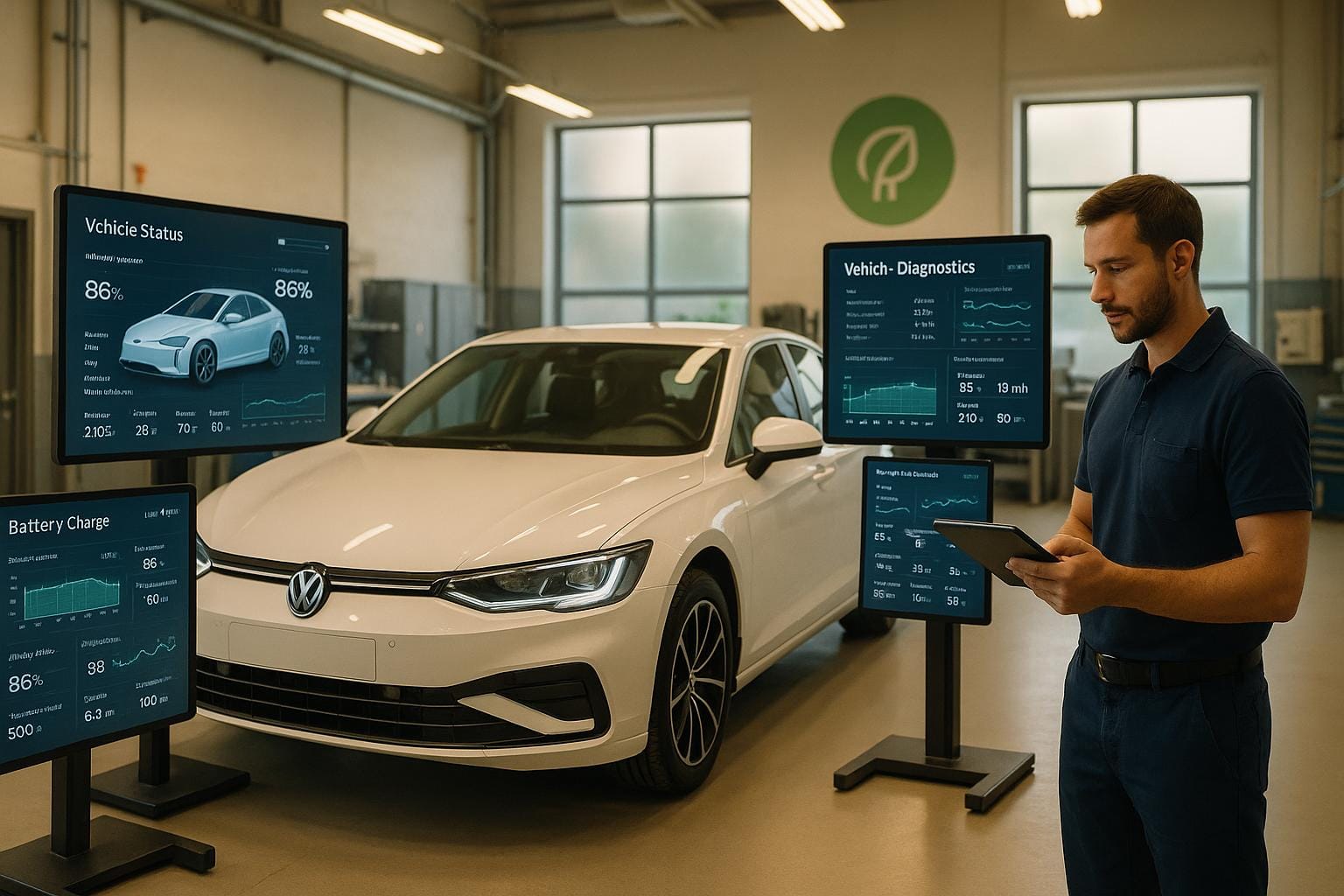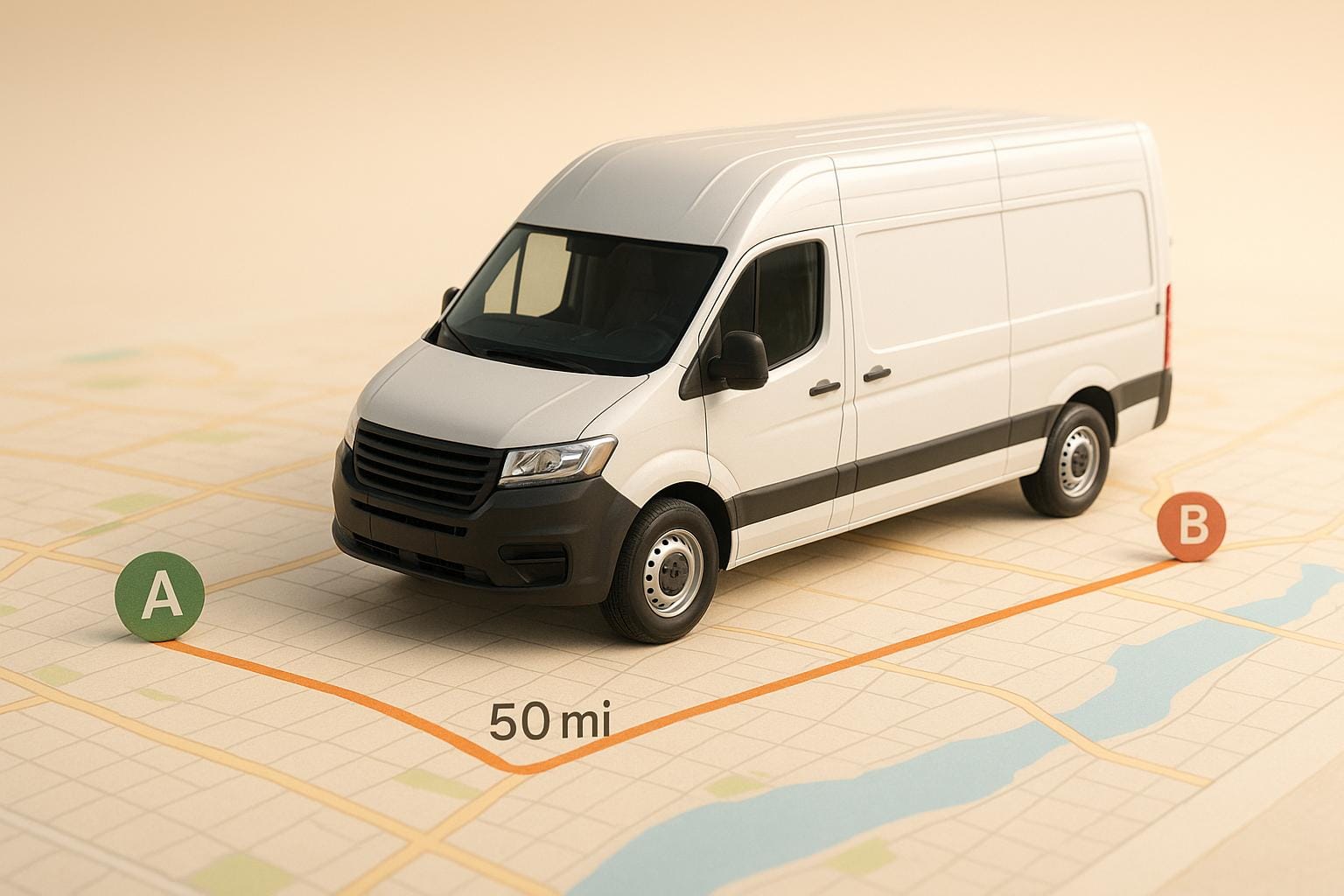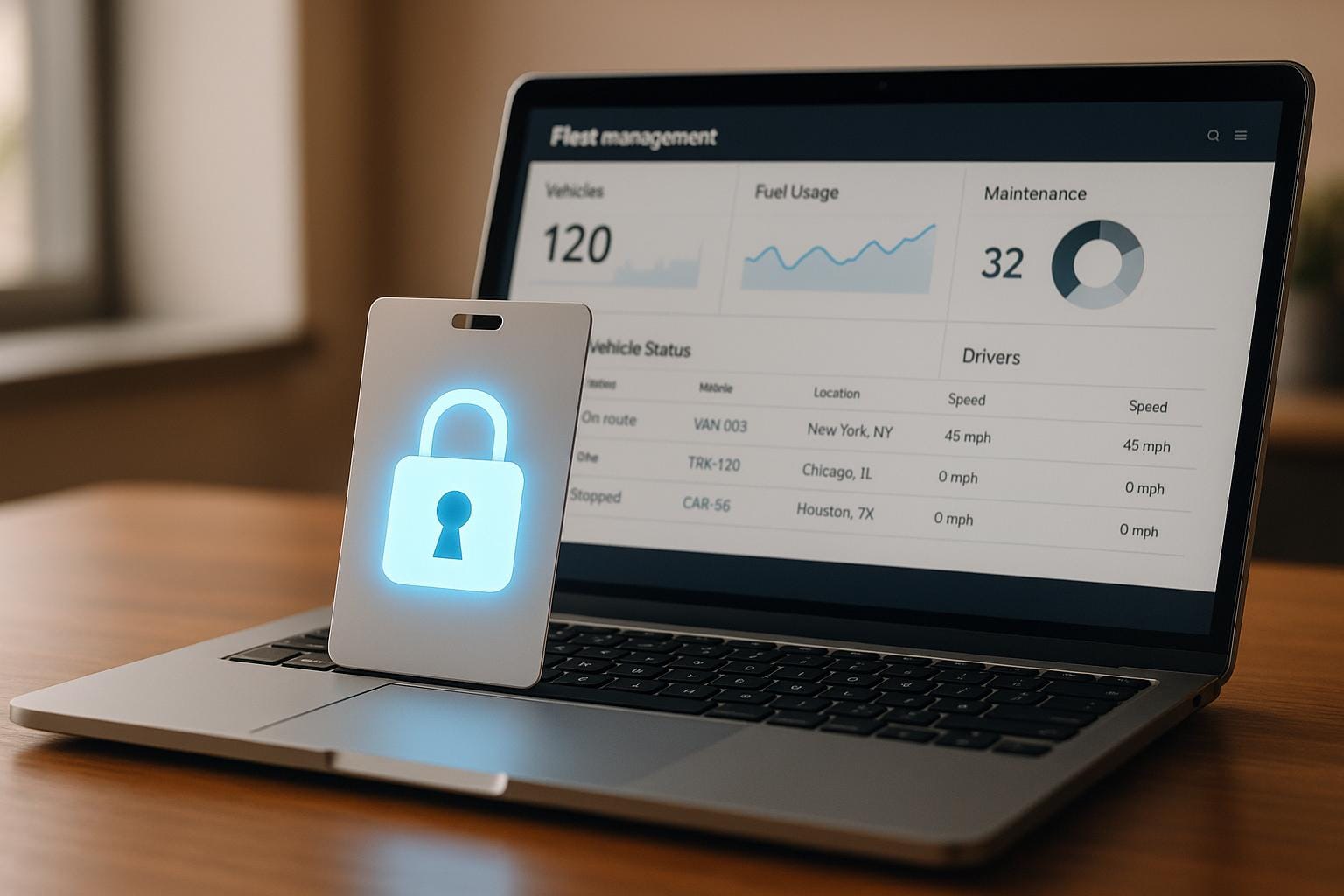Real-time asset tracking helps businesses monitor vehicles, equipment, and other valuable items using GPS and other technologies. It provides live updates on location, speed, and status, improving security, efficiency, and compliance. Advanced systems, like GRS Fleet Telematics, enhance this with dual-tracker setups and theft recovery support.
Key Benefits:
- Security: Track and recover stolen assets with systems boasting up to 91% recovery rates.
- Cost Savings: Reduce fuel use, insurance premiums, and maintenance costs.
- Efficiency: Optimise routes, monitor driver behaviour, and improve asset use.
- Compliance: Simplify record-keeping for regulations like tachographs and working hours.
Technologies Used:
- GPS: Accurate outdoor tracking.
- Bluetooth (BLE): Ideal for short-range or backup tracking.
- RFID: Suited for warehouses and checkpoints.
- NB-IoT/LTE-M: Reliable in low-coverage areas.
- Satellite: Best for remote locations.
Practical Applications:
- Fleet management, construction, healthcare, logistics, and field services benefit from reduced theft, better maintenance, and improved customer satisfaction.
To implement, assess your needs, choose suitable devices, and integrate tracking with existing systems. Solutions like GRS Fleet Telematics offer scalable options starting at £7.99/month per vehicle, including free installation and 24/7 recovery support.
Technologies Behind Real-Time Asset Tracking
Main Tracking Technologies
GPS (Global Positioning System) is at the heart of most asset tracking systems. By communicating with satellites, it provides location data with an accuracy of 3–5 metres. It's particularly reliable for monitoring fleet vehicles and mobile equipment across the varied landscapes of the UK.
Bluetooth Low Energy (BLE) is designed for short-range tracking, making it ideal for indoor applications or as a backup system. BLE devices are energy-efficient, often running for months on a single battery while maintaining continuous communication with nearby receivers. This makes them perfect for tracking tools, equipment, or adding secondary tracking layers within vehicles.
RFID (Radio Frequency Identification) is commonly used for assets passing through specific checkpoints. Warehouses and distribution centres rely on RFID tags to automatically log items as they move through doorways or loading bays. Passive RFID tags don’t require batteries and can scan multiple items simultaneously, streamlining operations.
NB-IoT (Narrowband Internet of Things) and LTE-M are cellular technologies gaining popularity for their low power consumption and reliable data transmission. These are particularly effective for tracking construction equipment or agricultural machinery in areas with limited network coverage.
Satellite tracking is indispensable when assets move beyond cellular network reach. Though more expensive, satellite systems ensure uninterrupted tracking for remote locations, such as rural Scotland, Wales, or offshore areas.
Together, these technologies form the backbone of modern asset tracking solutions, supported by advancements in data processing.
Edge Computing and Data Processing
Edge computing has revolutionised how tracking data is handled by processing it directly on the device instead of relying on remote servers. This method significantly reduces latency, meaning data can be analysed and acted upon almost instantly - a crucial advantage for ensuring the precision of the tracking technologies mentioned earlier.
Modern tracking devices can process data in real time. For instance, they can immediately detect unauthorised movement, harsh braking, or deviations from planned routes without waiting for server validation. This capability allows for quicker alerts and responses.
By filtering data at the source, edge computing also cuts down on bandwidth costs. Instead of sending raw location data every few seconds, devices transmit summary reports or only notify when specific events occur. This not only reduces data charges but also ensures that fleet managers receive critical updates without delay.
Another advantage is improved reliability. Devices equipped with edge computing can function independently during temporary network outages. They store data locally and transmit it once connectivity is restored, ensuring no gaps in asset monitoring.
The processed data is then utilised by various types of tracking devices.
Types of Tracking Devices
Asset tags are straightforward, battery-powered devices that attach to equipment. They provide location updates at set intervals and can last 2–5 years, making them ideal for non-powered assets like containers, trailers, or valuable tools.
Sensors enhance basic tracking by monitoring additional conditions. For example, temperature sensors protect cold chain deliveries, vibration sensors detect tampering or rough handling, fuel sensors help prevent theft, and door sensors ensure cargo security. These sensors often integrate with primary tracking systems to provide a more detailed overview of asset conditions.
Telematics units are the most advanced tracking devices. Hardwired into a vehicle’s power system, they can access engine diagnostics, track driver behaviour, and provide detailed operational data. Many telematics units use multiple communication methods - cellular, satellite, and Bluetooth - ensuring reliable connectivity, no matter the location.
Dual-tracker systems combine a primary hardwired unit with a secondary backup device. The backup tracker, often hidden and using a different communication method, operates independently. This redundancy ensures tracking continues even if the main system is disabled, significantly improving the chances of recovering stolen assets.
What is RFID Asset Tracking? | Complete Guide to How RFID Tracks Assets
Features and Benefits of Real-Time Tracking Systems
Let’s dive into how real-time tracking systems work and the practical advantages they bring to your business operations.
Core Features of Asset Tracking Systems
Live location updates are the backbone of any tracking system. These updates, provided every 10–30 seconds, ensure constant visibility of your UK fleet. Whether navigating through the M25’s notorious traffic or managing deliveries in busy city centres, this feature keeps you in control at all times.
Geofencing allows you to set virtual boundaries around specific areas, triggering alerts when assets enter or exit these zones. For example, construction firms use geofencing to monitor equipment moving between job sites, while delivery companies use it to notify customers of arrivals. Zones can range from as small as 50 metres to entire counties, offering flexibility for various needs.
Asset utilisation analytics help track how efficiently equipment is being used. By monitoring engine hours, idle times, and operational patterns, you can pinpoint underused assets and adjust fleet size or schedules accordingly.
Predictive maintenance takes the guesswork out of servicing. By analysing diagnostics, mileage, and usage data, these systems can forecast potential issues before they lead to breakdowns. This not only cuts down on costly repairs but also ensures vehicles stay compliant with MOT requirements.
Theft prevention tools offer immediate alerts for unauthorised movement, tamper detection, and even dual-tracker systems for backup monitoring. For instance, if a vehicle moves outside business hours, the system sends an instant notification via SMS or email, enabling swift action.
Driver behaviour monitoring evaluates driving patterns such as acceleration, braking, cornering, and speed compliance. This data highlights areas for driver training and can lead to lower insurance premiums thanks to improved safety records.
Tracking Technology Comparison
Here’s a quick overview of different tracking technologies, their strengths, and their limitations:
| Technology | Range | Accuracy | Battery Life | Best Use Cases | Limitations |
|---|---|---|---|---|---|
| GPS | Global | 3–5 metres | 2–5 years (tags) | Fleet vehicles, mobile equipment | Struggles indoors |
| Bluetooth Low Energy | 10–100 metres | 1–3 metres | 6–24 months | Indoor tracking, tool monitoring | Limited range |
| RFID | 1–10 metres | Checkpoint-based | 5–10 years (passive) | Warehouse inventory, access control | Requires close proximity |
| Satellite | Global | 5–10 metres | 2–4 years | Remote locations, marine vessels | Higher cost, slower updates |
| Cellular (NB-IoT/LTE-M) | National coverage | Location-dependent | 3–7 years | Construction equipment, agriculture | Network dependency |
Business Benefits of Real-Time Tracking
The features above translate into measurable advantages for businesses.
Enhanced security is a major plus, especially with vehicle theft on the rise in the UK. Real-time tracking enables swift action in theft situations, with some systems boasting recovery rates over 90%. Even the visible presence of a tracker can deter potential thieves.
Lower operational costs come from multiple angles. Fuel savings of 10–20% are common as drivers take more efficient routes and reduce idling. Insurance premiums can drop significantly, with some businesses saving £500–£1,500 per vehicle each year. Maintenance expenses also shrink thanks to predictive servicing and fewer emergency repairs.
Better customer service is achievable with accurate delivery estimates and proactive updates. Customers appreciate real-time notifications about arrival times, leading to fewer complaints and improved satisfaction scores. Many businesses report a 25–40% reduction in customer service calls related to delivery queries after adopting these systems.
Simplified regulatory compliance is another key benefit. Tracking systems automate record-keeping, helping businesses stay compliant with EU working time rules, track vehicle inspections, and maintain mileage logs for HMRC claims. This reduces administrative work and ensures accurate documentation.
Boosted productivity comes from smarter resource allocation and route planning. Fleet managers can quickly assign the nearest vehicle to urgent jobs, cutting response times by 15–30%. Detailed reports on asset use often reveal opportunities to reduce fleet size by 10–15%, without compromising service quality.
Informed decision-making becomes easier with the detailed reports generated by tracking systems. These insights uncover trends in fuel use, maintenance needs, and operational efficiency, enabling businesses to make data-backed decisions about vehicle replacements, route planning, and more. It’s all about turning raw data into actionable strategies.
How to Implement Real-Time Asset Tracking
Setting up a real-time asset tracking system requires thoughtful planning and a structured approach. The first step? Clearly understanding your business needs.
Assessing Your Business Needs and Asset Types
Begin by evaluating how you currently manage assets. Many businesses in the UK still depend on spreadsheets, manual logs, or even handwritten records. These outdated methods often lead to issues like misplaced assets, inaccurate counts, missed maintenance schedules, and time-consuming reporting processes.
Next, identify all critical physical assets and compile a detailed list. Include unique identifiers, quantities, and current locations. Once you’ve done that, set specific goals for your tracking system. Instead of broad aims like "improve visibility", focus on measurable targets - such as reducing asset loss by 25%, cutting audit times from two weeks to two days, or boosting maintenance compliance to 95%. These clear objectives will guide your choices and help justify the investment. Tailor your asset tracking strategy to the unique demands of your industry.
When selecting tracking devices, consider the environment where your assets operate. For example, construction equipment exposed to harsh conditions like dust and rain will need durable tags, while office equipment in controlled environments can use simpler options. If your vehicles operate across the UK, GPS tracking with reliable cellular coverage is essential. For warehouse equipment, shorter-range technologies might suffice.
Identify the must-have features for your system. Most businesses benefit from tools like barcode or QR code scanning for easy data input, mobile access for field teams, and maintenance tracking with automated alerts. If your assets frequently move between locations, real-time location updates are crucial. For high-value equipment, features like theft prevention through immobilisation and dual tracking can offer added security.
Once you’ve prioritised your needs, focus on integrating the tracking solution with your existing operational systems.
Connecting with Existing Systems
To maximise the value of real-time data, your tracking system must work seamlessly with your current business processes. Integration with existing systems - such as accounting software, ERP platforms, maintenance management tools, and IT helpdesks - is key. Modern tracking systems are often compatible with popular software like Sage, QuickBooks, or Microsoft Dynamics, ensuring accurate, up-to-date information flows across departments without manual input.
Plan for smooth data synchronisation. For example, connecting your system to accounting software can automate asset depreciation calculations. Similarly, integration with maintenance platforms allows service schedules to adjust in real-time based on actual usage rather than fixed calendar dates.
When evaluating systems, check their API capabilities. Good APIs enable custom integrations with industry-specific software. Construction companies, for instance, might link tracking data with project management tools, while logistics firms could integrate with route optimisation software.
These integrations create a solid foundation for advanced solutions like those offered by GRS Fleet Telematics.
GRS Fleet Telematics: Advanced Tracking Solutions
GRS Fleet Telematics provides a robust real-time tracking solution tailored for vehicle fleets across the UK. They offer three hardware packages to suit different budgets and security needs:
- Essential package (£35): Includes a single wired tracker for real-time location monitoring.
- Enhanced package (£79): Adds a Bluetooth backup tracker alongside the primary unit, offering dual-tracking for enhanced theft protection. If the main tracker is disabled, the backup continues to monitor, contributing to GRS's impressive 91% recovery rate for stolen vehicles.
- Ultimate package (£99): Combines both trackers with an immobilisation feature, allowing remote engine disabling to prevent unauthorised use.
The software subscription costs £7.99 per vehicle per month, covering SIM card and data charges, platform access, and a dedicated account manager. This transparent pricing model ensures straightforward budgeting with no hidden fees.
Free installation is available when paired with fleet branding services through GRS Fleet Graphics. This can help reduce overall implementation costs while ensuring a professional setup.
The system also includes 24/7 recovery support on a pay-per-recovery basis, avoiding upfront recovery fees. In case of theft, a dedicated team collaborates with the police to quickly locate and retrieve stolen vehicles.
For larger businesses, white-label branding options allow customisation of the platform with company logos and colours, ensuring brand consistency. The system is scalable, catering to both small operations and large fleets, making it an excellent choice for growing businesses.
Implementation takes 2-4 weeks from order to full deployment. This timeline includes hardware installation, software setup, and staff training. The system integrates seamlessly with fleet management processes and connects with commonly used accounting and maintenance software in the UK.
Applications and Best Practices
The advanced features and security improvements discussed earlier are reshaping how UK industries manage their operations. Whether it’s delivery vans navigating London’s bustling streets or construction equipment scattered across remote sites, real-time asset tracking is proving to be a game-changer.
UK Industry Applications
Fleet management stands out as one of the most effective uses of real-time tracking. Delivery companies rely on GPS to monitor vehicle locations, optimise routes, and improve customer service. When drivers can provide accurate arrival times, customer satisfaction naturally increases. Fleet managers also use this data to analyse driving behaviour - such as harsh braking, rapid acceleration, or excessive idling - which helps cut operational costs.
Construction companies face unique challenges with costly equipment spread across multiple sites. Real-time tracking mitigates the risk of theft for valuable machinery like excavators, generators, and power tools. It also allows site managers to locate equipment quickly, reducing delays and improving project timelines. Many construction firms report savings by making better use of their existing equipment and lowering rental costs.
Healthcare facilities across the UK are using asset tracking to locate critical devices such as wheelchairs, infusion pumps, and portable monitors. With the ability to find life-saving equipment within minutes rather than hours, hospitals enhance patient care while also reducing expenses tied to replacing lost or misplaced items.
Logistics and warehousing operations benefit from tracking high-value inventory and mobile equipment like forklifts and pallet jacks. Real-time location data helps streamline warehouse layouts and minimises the time spent searching for essential tools, improving overall efficiency.
Field service companies use tracking to monitor service vehicles and the expensive tools technicians carry. Ensuring the right equipment is available when engineers arrive on-site boosts first-time fix rates, reducing the need for follow-up visits.
These examples highlight the sector-specific advantages of real-time tracking, but the real value lies in applying best practices to maximise your return on investment.
Best Practices for Maximum ROI
Define clear objectives. Establish measurable goals before implementing a tracking system, such as reducing asset loss by a specific percentage or cutting audit times. Clear targets ensure focus and make it easier to evaluate success.
Perform regular audits. Monthly reviews of your data help maintain accuracy and ensure the system continues to deliver useful insights for decision-making.
Train your team and go mobile. Provide hands-on training and simple reference materials from the start. Make sure tracking data is accessible via smartphones or tablets to improve accuracy and efficiency. A well-trained team with mobile access is far more likely to use the system effectively.
Use analytics for preventive maintenance. Analyse tracking data to identify usage patterns and schedule maintenance before issues arise. This approach minimises downtime and extends the life of your equipment.
Integrate with existing systems. Connecting your tracking platform to tools like accounting software, maintenance systems, or CRM platforms creates a more streamlined operation and provides a full picture of asset performance.
Monitor key metrics. Regularly review indicators such as asset utilisation, maintenance costs, and theft incidents. Tracking these metrics helps identify trends and areas for improvement.
Establish clear procedures. Set up consistent processes for checking assets in and out, reporting damage, and updating locations. Clear policies ensure higher data quality and better adoption of the system.
Plan for growth. Choose a system that can scale with your business, accommodating more assets or locations as needed. This forward-thinking approach prevents costly upgrades down the line.
Maintain tracking devices. Schedule routine checks for GPS units, sensors, and batteries to ensure they’re functioning properly and to minimise system downtime.
Conclusion and Key Takeaways
Real-time asset tracking has become a game-changer for UK businesses aiming to maintain their edge in an increasingly competitive market. By bringing together GPS, IoT sensors, and cloud computing, this technology offers a clear picture of asset locations - whether it’s delivery vans navigating Manchester’s streets or construction equipment stationed in Edinburgh.
The advantages are hard to ignore: reduced theft, improved operational efficiency, and better customer service. Many UK companies adopting these systems experience immediate gains, such as better asset usage and lower costs through reduced insurance premiums and quicker recovery of stolen items.
Selecting the right tracking technology depends on your specific needs. GPS is ideal for outdoor tracking, while RFID and Bluetooth are better suited for indoor environments. Once you’ve identified your challenges - be it equipment loss, delayed deliveries, or maintenance problems - set clear goals. This will help you choose a system that integrates seamlessly with your existing tools.
Successful implementations in the UK reveal consistent trends: businesses that prioritise staff training, conduct regular system checks, and enable mobile access see the best results. Additionally, using data analytics for preventive maintenance can significantly extend the lifespan of equipment while cutting down on unexpected failures.
The applications for asset tracking go far beyond fleet management. Hospitals are locating critical medical equipment more efficiently, construction firms are cutting down on theft-related losses, and logistics companies are optimising warehouse operations. Across industries, real-time data is proving to be a key to staying ahead.
For those seeking reliable solutions, GRS Fleet Telematics stands out. Their dual-tracker technology boasts a 91% recovery rate for stolen vehicles, and with pricing starting at just £7.99 per month, it’s a cost-effective way to get started with professional asset tracking.
The evidence is clear: real-time tracking offers lasting benefits. As the technology evolves and becomes more accessible, the real question is no longer if you should implement asset tracking, but how soon you can start reaping its advantages.
FAQs
How does edge computing improve real-time asset tracking systems?
Edge computing transforms real-time asset tracking by analysing data right where it's generated. This minimises delays, allowing for quicker decisions and smoother operations. For applications like fleet management or vehicle recovery, this ability to act instantly is crucial.
Another advantage is how it manages security and reliability. By processing key data locally, systems remain functional even when the internet connection is slow or unreliable. This combination of speed and dependability makes edge computing a game-changer for modern asset tracking systems.
What are the key advantages of using dual-tracker systems for securing assets and recovering stolen vehicles?
Dual-tracker systems take vehicle security to the next level by using two distinct tracking technologies. This dual approach dramatically boosts the likelihood of recovering stolen vehicles, with an impressive 91% recovery rate. For businesses, this means assets can be located and retrieved swiftly, offering a reassuring layer of protection.
Another key benefit is the real-time theft alerts these systems provide. They allow for immediate action, helping to minimise losses and disruptions. For companies focused on safeguarding their assets, these systems are a reliable and practical solution.
How can businesses integrate real-time asset tracking systems smoothly with their current software and processes?
To seamlessly integrate real-time asset tracking systems, businesses should begin by assessing their current software and workflows. This helps pinpoint compatibility needs and identify any gaps that might hinder integration. Leveraging API-driven solutions or middleware tools can simplify data exchange, ensuring that systems work together smoothly.
Another critical step is setting up robust data governance practices. This involves defining clear ownership of data, standardising formats, and maintaining consistent and accurate data flow across all departments. On top of that, automating repetitive tasks can significantly improve efficiency while minimising manual errors, making the entire integration process more efficient and dependable.
